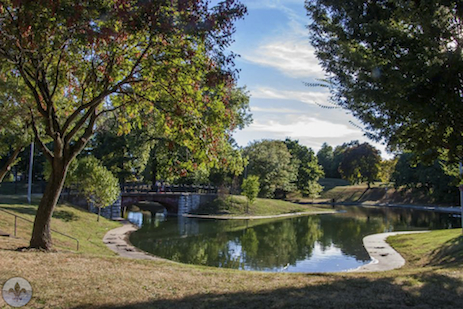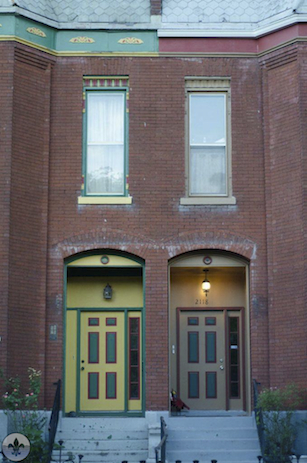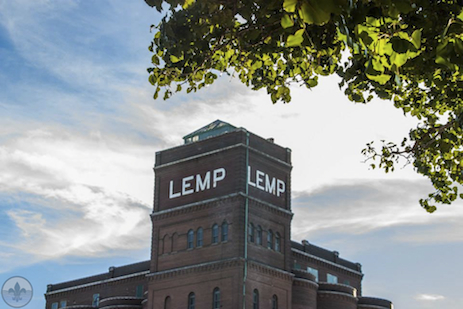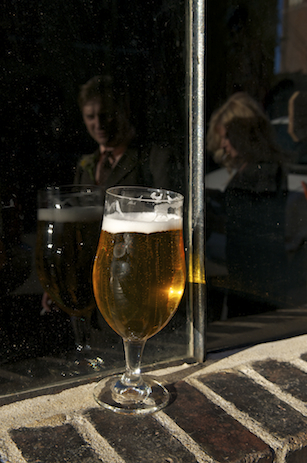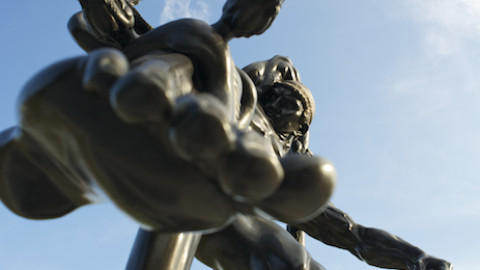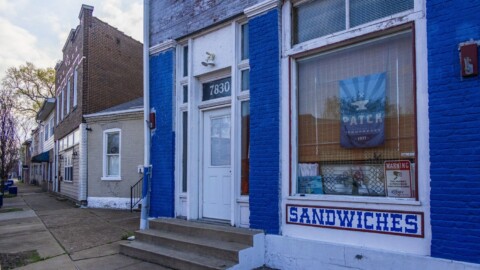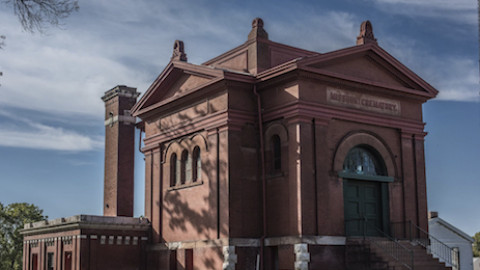photograph by Ann Aurbach
Originated from the same common pasture tradition as Lafayette Square, Benton Park is a historic St. Louis neighborhood notable for its unique topography and colorful architectural accents. The park that is the district’s namesake first served as a cemetery, and is the site of the mysterious legend of English Cave (the entrance to which has been lost in time).
photograph by Mandi Gray
photograph by Jason Gray
photograph by Kieara Crisp
photograph by Dan Henrichs Photography, St. Louis
The 1840’s for St. Louis was a decade of immense progress, tempered by devastating calamities (dealt by cholera and flame). The city’s population was expanding rapidly, and the land, whereupon the area’s first cemetery stood Downtown, needed to be cleared for development. The city responded by establishing two new cemeteries, one north of the city (Bellefontaine Cemetery) and one south. The southern cemetery, titled simply as the “City Cemetery”, was founded on land then used as part of the pastoral commons. Probably, this cemetery served to inter decedents from both St. Louis and Carondelet, which was further to the south along a trade route that would become Broadway. The common pasture tradition dates back to medieval Europe, and featured the practice of delegating acreage, usually on the borders of towns or cities, for the cultivation of crops by community residents. The practice included designating certain fields for agriculture and others for grazing livestock. St. Louis, especially to its west and south, was surrounded by various common fields until between about 1835 (when the state supported a bid to sell off the common fields for private development) and 1850 (when the private acquisition process really accelerated). The current neighborhoods of Benton Park and Lafayette Square were situated upon these communal prairies.
photograph by Kieara Crisp
photograph by Kieara Crisp
photograph by Jason Gray
City Cemetery functioned as such up until around 1865, when it was converted into a city park named after the former Missouri Senator, and early champion of the transcontinental railroad, Thomas Hart Benton. From its beginning, Benton Park seemed an antecedent to the more famous Lafayette Park, despite numerous attempts by local residents to raise its status through imaginative groundskeeping and landscaping. Progress on this appeared to be made by Edward Krausnick, whose vigorous landscaping was doted upon by the St. Louis City Parks Commissioner in 1881.
Benton Park became a neighborhood fostered by the vision of its German immigrants, many of who moved to the newly formed district from Soulard. The Germans were inspired by the large swathe of undeveloped land, which incidentally shared a unique topographical feature with the older French neighborhood to its east, a cave system. The cool, constant temperature of the cave system was attractive to the German brewers, who were interested in using the underground chambers to keep their beer cold (a process that the Annheuser-Busch Brewery, Lemp Brewery, Falstaff Brewery, and more all practiced in the area). A local brewer, named Ezra English, entertained guests at an underground resort located in the cave that stored his product. Eventually, this cave became known as English Cave. English Cave is the largest one known to exist under St. Louis, and was the de facto cooler for many breweries, including Lemp. The cave is reported to extend from Benton Park all the way south to the former Lemp Brewing complex (at Lemp, the cave is known as Cherokee Cave). Allegedly, a curse became attached to English Cave when a Native American woman and her lover starved to death inside, apparently, trapped from escaping by her jealous husband. Certainly, this is one of the more compelling folk tales to originate from the region. The curse has been blamed for a number of businesses failing, and strange occurrences, including the overnight disappearance of water from Benton Park pond (suspected to have drained into the cave or a sinkhole through a fissure). Even more remarkable, the entrance to English Cave is said to be lost, this despite many groups having dedicated considerable time to finding it.
photograph by Ann Aurbach
photograph by Kieara Crisp
photograph by Mandi Gray
photograph by Jason Gray
The blossoming of breweries in Benton Park and subsequent migration of German builders bestowed the neighborhood with an exemplary collection of architecture (especially residential), noted for its high-degree of brick ornamentation, that is virtually unrivaled in St. Louis. The late-1800’s was a prosperous time for brewing in the city, and Benton Park enjoyed the benefits like nowhere else.
Benton Park continued to flourish up until the introduction of Prohibition in 1919, which crippled many of the neighborhood’s breweries, including the seemingly indomitable Lemp Brewery. The International Shoe Company purchased the former Lemp building complex, and re-employed many factory workers from the surrounding area. However, the character of the neighborhood after its “beer era” had irreversibly shifted into something a little less vibrant and decidedly less prosperous. Additional damage was dealt after World War II, when Benton Park’s eastern border with Soulard was cleaved away for highway construction. Like many St. Louis neighborhoods that experienced upheaval caused by the new interstate system, Benton Park withered in terms of population. Curiously, the neighborhood never became as significantly blighted as Lafayette Square, this despite Lafayette Square’s earlier reputation as the more fashionable neighborhood of the two (probably due to the fact that no major city housing project was constructed nearby Benton Park). Additionally, after the Germans and others of Western European descent had moved out, the largely African-American families that replaced them seemed to do a better job of maintaining the residences of Benton Park than in some other areas of the city (a side-effect of poverty, not race, to be sure). Perhaps this is in part true because the intensity of racial tension in South City never burned as hot as it did in North City, where rioting mobs followed the desegregation of public pools, for instance.
photograph by Dan Henrichs Photography, St. Louis
photograph by Ann Aurbach
photograph by Kieara Crisp
photograph by Mandi Gray
photograph by Kieara Crisp
Revitalization of Benton Park began in the 1970’s paralleling that which was occurring in other places nearby, like Lafayette Square. The antique district along Cherokee Street was among the first truly successful and lasting revitalization projects in St. Louis. In the 1980’s, artists started to move into the neighborhood, chasing after cheap rent and available studio space. The impression made by these creatives, who established the first neighborhood arts council in STL, continues to characterize a large part of the social fabric Benton Park. In the 2000’s, Sidney Street became host to a number of critically recognized dining destinations, including the Sidney Street Cafe (still there) and Niche (moved to Clayton). Today, the neighborhood is a complex mixture of “haves” and “have nots” which could stand, probably, to be a little better integrated. The north half of Benton Park is highly gentrified, consisting mostly of White, urban professionals, while the southern half is largely Black and still somewhat impoverished. Of course, this is a condition affecting much of St. Louis, and also most other Rust Belt cities. Nonetheless, the Benton Park Neighborhood Association does a great job of attempting to meet the needs of all of the neighborhood’s residents. Benton Park is listed on the National Register of Historic Places.
photograph by Kieara Crisp
photograph by Dan Henrichs Photography, St. Louis
photograph by Jason Gray
Our endpoint in Benton Park was Frazer’s Restaurant and Lounge. There, we had some amazing food, and shared great conversation, while “the brewery” glowed not far outside the window. The restaurant is intimate, with thoughtfully prepared meals, and we highly recommend visiting!
image from Trip Advisor

